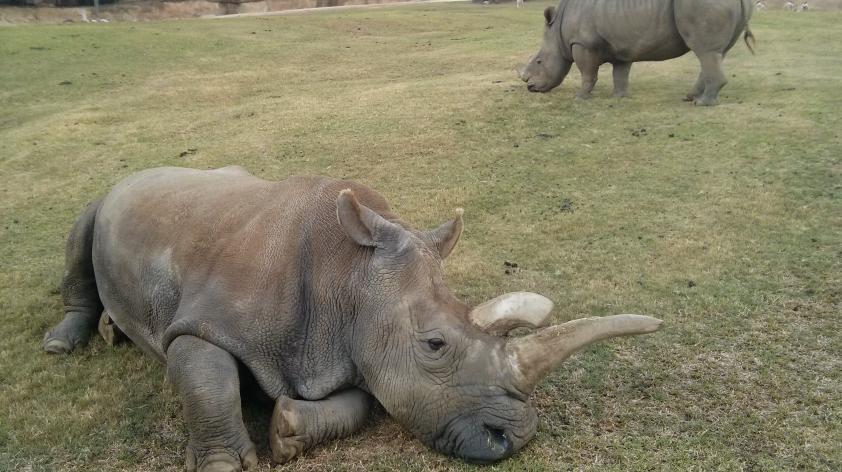
A Lifeline To Escape Extinction (Part 2)
Some have said that using stem cells to save species is “Star Trek-type science”, but look at how far we have come. Fifty years ago, when Star Trek debuted, a computer filled an entire basement and used punch cards for data entry. Now we just say “Siri” or “ok Google” to get answers from a computer that fits in our pocket. Of course, many may feel this way because they don’t really understand how far stem cell research has come in the last decade. Recently, a group of Japanese scientists produced living mice using sperm and eggs generated from iPSCs, which were created from skin cells (Hikabe et al 2016). The science is real.
In 2011, a post doc in Dr. Jeanne Loring's lab, Inbar Friedrich Ben-Nun, was able to create iPSCs from northern white rhino fibroblasts (Ben-Nun et al 2011). These cells are from Fatu, the youngest NWR. This original rhino stem cell line was created from fibroblasts (or reprogrammed) using a virus that inserts or integrates it’s DNA into the host’s DNA. By adding virus DNA we may affect normal gene function, which is detrimental to the cells. In 2015 I joined Dr. Jeanne Loring’s lab (as a CIRM intern) and worked with research associate Cullen Pivaroff. Cullen was able to use a non-integrating method to reprogram fibroblasts from Angalifu, a male NWR that passed away in 2014, to iPSCs without altering his DNA. Today, Dr. Marisa Korody, a postdoctoral associate in Genetics, and I, are working to create additional northern white rhino iPSCs from fibroblasts in the Frozen Zoo® using the same techniques.
Although we were successful in 2015, we only reprogrammed one rhino of the four attempted, resulting in only one stem cell line. Ideally, we would like at least three stem cell lines per individual, but with a success rate of one in a million, we were lucky to just get one. The methods, although cutting edge science, are optimized for human cells, not rhinos. By testing multiple protocols over several months Cullen was able to derive one stem cell line from Angalifu. We need to do the same or better for the remaining eleven NWRs in the Frozen Zoo®.
Our first step, optimize the media that is used to “feed” the cells every day. The Cytogenetics group at San Diego Zoo Global is a world leader in animal cell culture, especially rhinos. By leveraging this expertise we have increased reprogramming efficiency in rhinos. However, improved success is a double edged sword. We started with five rhinos, which yielded over 100 potential stem cell lines. Each stem cell line grows in a group (or colony) of potential stem cells and needs daily care. Imagine each colony as a child that needs your constant supervision and care, you can’t just leave them alone over the weekend. Just as each of your kids has their own personality, so do the stem cells. Some colonies grow faster, some slower, and some spontaneously decide they want to become another type of cell, perhaps skin cells. Colonies are observed and compared daily to eventually whittle the numbers down to 10 - 15 of the best. Next, we will be testing the new rhino iPSCs to verify that they are indeed pluripotent and able to form any tissue type.
The final step of our work will be to take the rhino iPSCs and coax them into sperm and eggs. Marisa and I hope to mirror the Japanese mouse study using rhino iPSCs. “All the technologies have been done, but in other species,” says Loring. “It’s not certain these things are going to translate directly to rhinos.” Although the translation is difficult and challenging, it is not insurmountable. The northern white rhino genome was recently sequenced, providing the “Rosetta Stone” to translate these technologies to create the scientific lifeline the northern white rhino needs to escape extinction.
All of human scientific knowledge woven together can accomplish the seemingly impossible. Extinction looms like the inevitable dusk that settles every night over the central African savannahs where the northern white rhino once roamed in the thousands. Science is the lifeline that gives hope to those forced to the edge of extinction: 16 year old Fatu, her mother Najin, and her grandfather, Sudan. The last of their species... for now.
Read Part 1 here: http://institute.sandiegozoo.org/science-blog/lifeline-escape-extinction...













